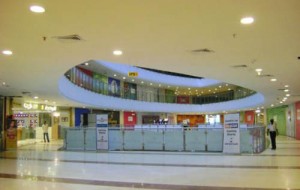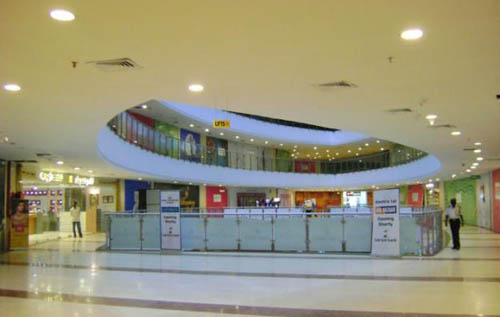 Asia and Latin America’s economic resurgences have fueled an upturn in retail activity, with increasing rents reflecting high demand for the limited amount of prime retail opportunities in both regions, according to A Global Perspective on the Shopping Center Industry, a new global retail report from Cushman & Wakefield and the International Council of Shopping Centers (ICSC).
Asia and Latin America’s economic resurgences have fueled an upturn in retail activity, with increasing rents reflecting high demand for the limited amount of prime retail opportunities in both regions, according to A Global Perspective on the Shopping Center Industry, a new global retail report from Cushman & Wakefield and the International Council of Shopping Centers (ICSC).
The report focuses on global retailers and macroeconomic and consumer trends impacting the global shopping center industry, as well as demand and rent trends for prime shopping centers within each region of Asia Pacific, Europe and the Americas. It also provides an overview of how these trends will shape these centers as retailers and shopping center owners position their centers for the next phase of the global real estate cycle.
Changes in consumer preferences, spending patterns and technological advances have impacted owners and retailers in all regions. Owners of prime shopping centers throughout the world are constantly repositioning their properties to provide consumers with their desired full shopping “experience.” With the increasing maturity of e-commerce, owners are using technology in new ways – including smartphone applications, virtual malls and social media events – to drive visitor traffic to their shopping centers.
However, despite rapid changes in technology and how consumers shop and interact with brands, “the physical shopping center is still at the heart of a consumer’s retail ‘experience,’” said Glenn Rufrano, President and Chief Executive Officer of Cushman & Wakefield. “Successful retailers and owners will be those who are able to partner and carefully evaluate opportunities for revenue, profitability and expansion.”
Owners are also focused on tailoring their tenant mix for different segments of shoppers, adding a higher concentration of luxury retailers in areas with pockets of wealth and high volumes of international tourists, and providing a stronger international mix of retailers to meet consumer demand. While many brands have positioned their flagship marketing stores on high streets in urban retail districts, some retailers are actually choosing shopping centers over urban retail corridors for additional expansion, citing the advantages of shopping centers higher-quality tenant mix and more modern, convenient amenities.
“The shopping center sector remains a truly dynamic sector of retail real estate,” said John Strachan, Global Head of Retail for Cushman & Wakefield. “As tenants and owners expand across borders we are seeing exciting new schemes that will define the next phase of the industry’s growth. “
While globalization is taking a central role in the shifts occurring in the shopping center industry, consumer behavior is widely different throughout the world, which has had a large impact in shaping the formats of shopping centers throughout the globe. The U.S. has older and more mature super-regional shopping centers located in suburban areas, while in Europe prime shopping centers are generally less abundant and can be located in central locations or along major traffic routes. In Asia, density reigns supreme due to its high population – the five largest shopping centers in the world are located in China, the Philippines, Malaysia and Thailand.
ASIA PACIFIC
Asia Pacific leads the three world regions in terms of rental growth for shopping centers, with rental rates increasing 2.8 percent over the past year. Asia Pacific’s booming consumer class, new economic policies supporting retail and growing international scope have promoted the region’s strong performance, and will support future expansion. With rental rates of over $927 per square foot for its prime shopping centers, Hong Kong’s high volume of mainland tourists and dearth of prime shopping center space has made it home to the world’s highest retail rates. Rents in Shanghai and Beijing, which are popular entry points for international retailers, have climbed to $404 per square foot and $368 per square foot, respectively.
Asia Pacific’s promising retail future has led to significant new development, with 300 million square feet of retail projects in the first half of 2012. While some cities are at risk of overbuilding, positive long-term economic and demographic conditions will provide a strong platform for growth and absorption of new shopping centers across the region.
EUROPE
Despite the turmoil of the European debt crisis weighing heavily on its economy, the prime shopping center market in Europe remains stable. Country performance has been mixed, with annual rent growth rates between zero and 0.5 percent. Countries seeing the strongest levels of economic expansion are also experiencing the strongest rental growth, including a 7 percent increase in Poland and a 4 percent increase in Turkey. Markets with the highest rental rates include Moscow, at $372 per square foot, London, at $279 per square foot, and Zurich, at $255 per square foot.
Tenant demand for well-located prime shopping centers remains strong, with some retailers preferring to expand into shopping centers rather than opening high street stores, sustaining demand for available space. The availability of large units in prime shopping centers remain in short supply, with vacancy rates for prime centers trending on par or lower than those on high streets. New supply remains limited, with only 69.8 million square feet of new shopping center space delivered in 2011. More than two-thirds of new development is occurring in Central and Eastern Europe, with Russia, Turkey and Poland all poised to see significant new supply along with strong economic expansion.
AMERICAS
The prime shopping center market in the Americas is outperforming other retail segments and property types. Growth in consumer spending and retail sales has resulted in positive demand for prime malls in the U.S. and Canada. Occupancy and rental rates have increased in urban luxury malls that cater to tourists in gateway cities, such as New York, Washington, D.C., Miami, Los Angeles, San Francisco, Las Vegas, Toronto and Vancouver. Pockets of wealth have driven strong demand for high-end and luxury products, while retailers in the middle are struggling with low revenue growth and declining revenues as mall owners are replacing them with high-end tenants.
Latin America has been the bright spot in the Americas, fueled by a different set of economic drivers, including a strong middle class, which, coupled with the existing wealthy class, has tremendous untapped spending power and high consumption rates. As a result, major international retailers from the U.S., Europe and Asia are expanding throughout Latin America, and the vacancy rate at many of the region’s top luxury malls is between 2 and 3 percent. Markets with the highest rental rates include Argentina, at $500 per square foot, São Paulo, at $309 per square foot, and Colombia, at $250 per square foot.
Cushman & Wakefield is an industry knowledge leader, and its global retail platform has helped retailers and retail owners around the world. In addition to a Global Perspective on the Shopping Center Industry, while at the 2012 ICSC Retail Real Estate World Summit in Shanghai, Cushman & Wakefield will also launch its Global Cities Retail Guide, the retail real estate industry’s new premier global knowledge tool to help retailers understand, enter, operate and thrive in the world’s diverse retail markets. Following the World Summit, Cushman & Wakefield will release its Retail MarketView, Malls to Look Out for in 2013 and its Retail Globalization Index. Cushman & Wakefield’s annual Main Streets Across the World report will be released at MAPIC in Cannes, France.






1 Comment
Pretty section of content. I just stumbled upon your blog and in accession capital to assert
that I get actually enjoyed account your blog posts.
Any way I’ll be subscribing to your augment and even I achievement you
access consistently quickly.